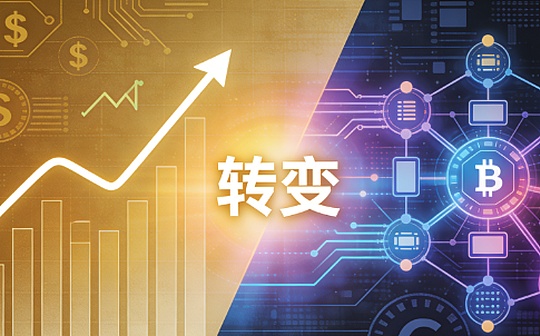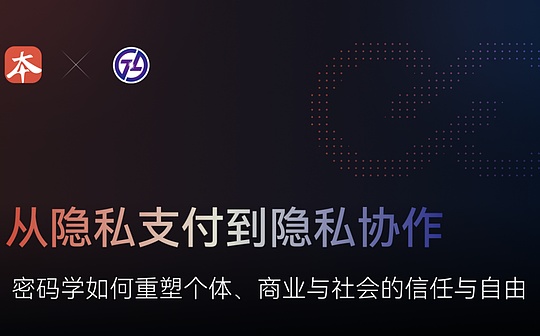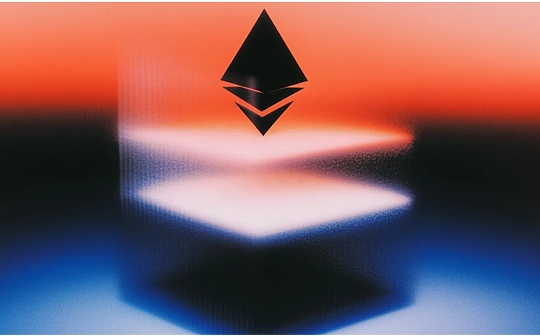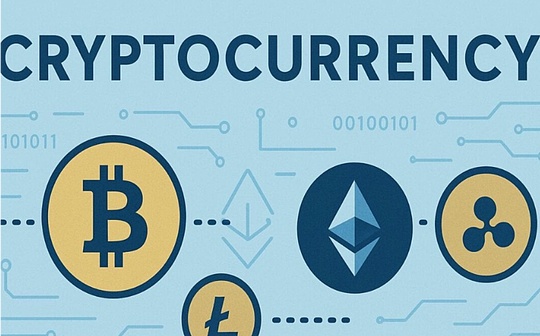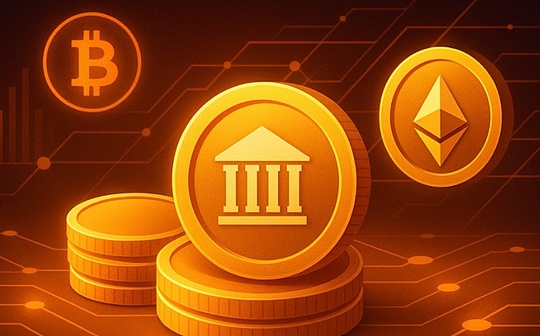
Source: Google Clound; Compilation: Bitchain Vision
Note: Today there is news that Google has launched its own L1 blockchain Google Cloud Universal Ledger (GCUL).But a simple search reveals that Google Cloud has been launching GCUL for a long time.As early as March 2025CMEWorking with Google to successfully complete the first phase of GCUL integration and testing; in June 2025, Google Cloud Web3 digital native engineer Benjamin J. RichterCrypto Valley ConferenceyGCUL was introduced on the speech, with the title of “Beyond Stablecoins: The evolution of Digital Money”, which is the official website of Google Cloud to introduce GCULArticle title.
According to Google Cloud,GCUL is a private, licensed system designed with compliance in mind.Let’s take a look at the official Goolge Cloud that defines GCUL itself:
Beyond Stablecoins: The evolution of Digital Money”
Stablecoins experienced significant growth in 2024, with trading volume tripling, organic trading volume reaching $5 trillion, and total trading volume reaching $30 trillion (data: Visa, Artemis).By comparison, PayPal’s annual transaction volume is about $1.6 trillion, while Visa’s about $13 trillion.The supply of stablecoins pegged to the US dollar has grown to more than 1% of the US dollar money supply (M2) (data: rwa.xyz).This growth clearly shows that stablecoins have taken a place in the market.
Demand for better services is driving a significant shift in the nearly $3 trillion payments market.Stablecoins have escaped the shackles of complexity, inefficiency and high cost of traditional payment systems, achieving seamless capital transfer between digital wallets.New solutions have also emerged in the capital market to promote the payment links of digital asset transactions, improve transparency and efficiency, while reducing costs and settlement time.
This article explores the evolving financial landscape and proposes a solution that allows traditional finance and capital markets to not only catch up, but also lead the trend.
Private Currency: Similarities between Paper Currencies and Stable Coins
Stablecoins have many similarities with privately issued paper money, which began to be widely circulated in the 18th and 19th centuries.At that time, the reliability and supervision of bank notes issued by banks vary.These notes make trading easier – they are easier to carry, count and exchange without weighing or evaluating the purity of gold.To strengthen people’s trust in this new form of currency, paper money is supported by reserves and promises to exchange for real-world assets, most commonly precious metals.The number and liquidity of transaction wallets have been greatly improved.Most notes are only accepted in local areas near the issuing bank.For long-distance transactions, they are exchanged for precious metals or cleared between banks.To obtain these benefits, users accept a trade-off between a single bank default risk and a fluctuation in value based on the solvency perception of the issuer’s solvency.
Partial reserve banking system and regulation
What followed was significant economic growth and financial innovation.An expanding economy requires a more flexible money supply.The bank noticed that not all depositors would request redemption at the same time and realized that they could make a profit by lending some of the reserves.The partial reserve banking system came into being, and the paper money in circulation exceeded the reserves held by banks.Poor management, risky lending practices, fraud, and economic recession have resulted in bank runs, bankruptcies, crises and depositor losses.These failures have led to the strengthening of supervision and supervision of currency issuance.With the establishment and expansion of central bank powers, these regulatory measures have created a more centralized system, improved banking business, stricter rules, higher stability, and higher public trust in the monetary system.
Today’s monetary system: commercial bank currency and central bank currency
Our current monetary system adopts a dual currency model.A commercial bank issuing a commercial bank currency, which is essentially a liability of a specific bank (IOU, IOU), which is fully regulated.Commercial banks adopt a partial reserve model, which means they only hold a small portion of their deposits as reserves for central bank currencies, while the rest is used for lending.Central bank currency is a liability of the central bank and is considered risk-free.Liabilities between banks are electronically settled in central bank currency (via RTGS systems such as FedWire or Target2).The public can only use commercial bank currencies for electronic transactions, and the phenomenon of using cash (physical central bank currencies) for transactions is decreasing.Under a single currency system, all commercial bank currencies are interchangeable.Banks compete in services, not in monetary quality.
Today’s financial infrastructure: decentralized, complex, expensive and slow
With the rise of computers and networks, currency transactions were recorded electronically and could be carried out without cash.Liquidity, accessibility and product innovation have reached new heights.Solutions vary from country to country, and cross-border transactions remain economically and technically difficult.Agent banks need to deposit idle funds in cooperative banks, and the complexity of infrastructure forces banks to limit cooperative relationships.As a result, banks are gradually exiting agency banking relations (down 25% over the past decade), which means longer payment chains, slower payments and higher costs.Convenient solutions that simplify these complexities, such as the global credit card network, are expensive for businesses that pay.Most improvements are focused on the front end, and innovation in payment processing infrastructure is slow.
The fragmentation of the financial system has exacerbated trade frictions and slowed economic growth.The Economist estimates that by 2030, fragmented payment systems will have a staggering macroeconomic impact on the global economy, with losses of up to US$2.8 trillion (-2.6% of global GDP), equivalent to more than 130 million jobs (-4.3%).
Fragmentation and complexity also cause damage to financial institutions.In 2022, the annual maintenance cost of an outdated payment system is $37 billion and is expected to grow to $57 billion by 2028 (IDC Financial Insights).In addition, inefficiency, security risks, and extremely high compliance costs exacerbate direct revenue loss from not being able to provide real-time payment services (75% of banks have difficulty implementing any new payment services in outdated systems, and 47% of new accounts come from fintech companies and new banks).
High payment fees hinder the internationalization of enterprises and affect profitability and valuation.Companies that handle large amounts of payments have a strong incentive to reduce payment processing fees.Let’s take Walmart as an example – reducing its annual payment processing fee of about $10 billion (assuming the average fee of $700 billion in revenue is 1.5%) to $2 billion, which can increase earnings per share and share price by more than 40%.
New infrastructure, new opportunities
Experiments in the Web3 field have led to the development of promising technologies such as distributed ledgers (DLT).These technologies provide a completely new way of trading for the financial system by providing a global, always-on infrastructure, with advantages including: support for multi-currency/multi-assets, atomic settlement and programmability.The financial field has begun to transform from siloed databases and complex messaging models to transparent, tamper-free shared ledgers.These modern networks simplify interaction and workflows, eliminate the need for independent, expensive, and slow reconciliation processes, and eliminate the technical complexity that hinders speed and innovation.
Subversive: Stablecoin
Stablecoins are based on decentralized ledgers and can achieve nearly instant and low-cost global transactions without being restricted by traditional banking (business hours, regions).This freedom and efficiency drives their explosive growth.High interest rates also make them profitable.Profits, growth and confidence in underlying technologies have attracted investments from venture capital and payment processing companies.Stripe acquired Bridge to provide online merchants with the ability to accept stablecoin payments.Visa also provides partner payment and settlement services using stablecoins.Retailers such as Whole Foods are accepting and even incentivizing payments with stablecoins to reduce transaction fees and receive payments instantly.Consumers can get stablecoins in seconds (Coinbase and ApplePay integration).
Stablecoins face many challenges.
-
Regulation: Unlike traditional currencies, stablecoins lack comprehensive supervision and supervision.Regulation in the United States is accelerating, while the EU applies electronic currency rules to electronic currency tokens through MICAR.Depositor protection does not apply to stablecoins.
-
Compliance: Ensuring compliance with anti-money laundering and sanctions laws is a challenge when anonymous accounts are traded on public blockchains (in 2024, 63% of the $51.3 billion illegal transactions on public blockchains involved stablecoins).
-
Fragmentation: Many stablecoins operate across different blockchains, requiring complex bridging and conversion.This fragmentation has led to people relying on automated robots for arbitrage and liquidity management, which accounts for nearly 85% of the transaction volume ($5 trillion in organic transactions and $30 trillion in total).
-
Infrastructure scalability: In order to achieve widespread application, underlying technologies must be able to handle massive transactions.In 2024, the volume of stablecoin transactions is about 6 billion, the volume of ACH transactions is about one order of magnitude higher, and the volume of bank card transactions is two orders of magnitude higher.
-
Economic/Capital Efficiency: Currently, banks are expanding their money supply by lending several times more than their reserves, thereby driving economic growth.The widespread use of stablecoins will transfer banks’ reserves, thereby significantly reducing banks’ lending capacity and directly affecting their profitability.
The immediate challenges facing stablecoins—the issuer’s credibility, regulatory ambiguity, compliance/fraud and fragmentation—are similar to those of early privately issued notes.
Large-scale adoption of fully reserved stablecoins will not only disrupt the banking and financial sectors, but also disrupt the current economic system.Commercial banks issue credit, currency and liquidity to support economic growth; central banks directly manage inflation through monetary policy monitoring and impacting this process and indirectly pursue other policy goals, such as employment, economic growth and welfare.The large transfer of reserves from banks to stablecoin issuing institutions may reduce credit supply and increase their costs.This will curb economic activity, potentially lead to deflationary pressures and pose a challenge to the effectiveness of monetary policy implementation.
Stablecoins bring significant advantages to users, especially in cross-border transactions.Competition will drive innovation, expand use cases, and stimulate growth.Higher transaction volumes and the adoption of more stablecoin wallets may lead to a decrease in traditional bank deposits, loans and a decline in profitability.As regulation becomes more and more refined, we may see the emergence of some reserve stablecoin models, blurring the boundaries between them and commercial bank currencies and further intensifying competition in the payments field.
The dilemma of innovators
Today, institutions and individuals face two options: either a familiar and low-risk, but slow and costly traditional payment systems, or a modern payment system that is fast, cheap, convenient and constantly improved but accompanied by new risks.More and more people choose modern payment systems.
Payment service providers are also facing choices.They can view these innovations as niche markets without affecting the core customer base of traditional finance, and focus on incremental improvements to existing products and systems.Or they can leverage their brand, regulatory experience, customer base and network to lead the new era of payments.By adopting new technologies and building strategic partnerships, they can meet changing customer expectations and drive growth.
Improve payment through evolution rather than revolution
The path to the next generation of payments – global, all-weather, multi-currency and programmable – is feasible,It doesn’t need to reinvent the currency, it just reimagines the infrastructure.Commercial bank currency and sound traditional financial regulationableIt can solve the stability, regulatory clarity and capital efficiency of the existing financial system.Google Cloud provides the necessary infrastructure upgrades.
Google Cloud Universal Ledger (GCUL) is a new platform aimed at creating innovative payment services and financial market products.itSimplify the management of commercial bank monetary accounts and facilitate transfers through distributed ledgers, enabling financial institutions and intermediaries to meet their most discerning customer needs, and compete effectively.
GCUL’s design philosophy is simple, flexible and safe.Let’s analyze in detail:
-
Simple: GCUL is provided in the form of a service and is accessible through a single API, simplifying the integration of multiple currencies and assets.It does not require infrastructure construction and maintenance.Transaction fees are stable and transparent and are billed monthly (unlike the volatile prepaid cryptocurrency Gas fees).
-
Flexible: GCUL provides unrivalled performance and can be scaled to any use case.It is programmable for payment automation and digital asset management.It can be integrated with the wallet of your choice.
-
Safety:GCUL is designed with full compliance in mind (e.g., KYC verification accounts, compliance transaction fees outsourcing).GCUL is a private and licensed system(The system may become more open as regulations evolve) It takes advantage of Google’s secure, reliable, durable and privacy-oriented technology.
GCUL brings significant advantages to customers and financial institutions.Customers can experience nearly instant transactions, especially in cross-border payments, while enjoying the advantages of low fees, 24/7 services and payment automation.Financial institutions, on the other hand, benefit from reduced infrastructure and operating costs, thanks to their elimination of reconciliation links, reducing errors, simplifying compliance processes and reducing fraud.This frees up resources for financial institutions to develop modern products.Financial institutions can take full advantage of their existing advantages, such as customer networks, licenses and regulatory processes, so as to fully control customer relationships.
Payment is a catalyst for the capital market
Similar to payments, the capital market has undergone significant changes due to the adoption of electronic systems.Electronic trading initially encountered resistance, but ultimately revolutionized the entire industry.Real-time price information and wider access channels promote liquidity improvements, thereby speeding up execution, reducing spreads and reducing costs per transaction.This in turn stimulates further growth in market participants (especially individual investors), product and strategy innovation, and overall market trading volume.Although the price of each transaction has dropped sharply, with the advancement of electronic trading, algorithmic trading, market making, risk management, data analysis and other fields, the entire industry has achieved significant expansion.
However, the payment challenge remains.The limitations of traditional payment systems result in settlement cycles that last up to several days, which requires working capital and collateral to manage risk.The digital assets and new market structures empowered by distributed ledger technology are hampered by friction inherent in the connection between traditional and new infrastructure.Independent asset and payment systems exacerbate fragmentation and complexity, hindering the industry from benefiting fully from these innovations.
Designed to address these challenges, Google Cloud Common Ledger (GCUL) provides a streamlined, secure platform to manage the entire digital asset life cycle (such as bonds, funds, and collateral).GCUL achieves seamless and efficient digital asset issuance, management and settlement.Its atomic settlement function minimizes risks and enhances liquidity, thus unlocking new opportunities in the capital market.We are exploring how to transfer value using a secure medium of transactions provided by regulated agencies, supported by bankruptcy-protected assets such as central bank deposits or money market funds.These initiatives promote true all-weather capital flows and drive the next wave of financial innovation.
Now is the time to take action
The future of finance is digital, but it is not necessarily fragmented or expensive.Google Cloud’s universal ledger provides an easy-to-integrate, scalable, secure and efficient solution.It is built on the partner model and complements the existing business model, not competing with it.This design enables our partners in financial services and capital markets to create value for their customers and drive innovation.

